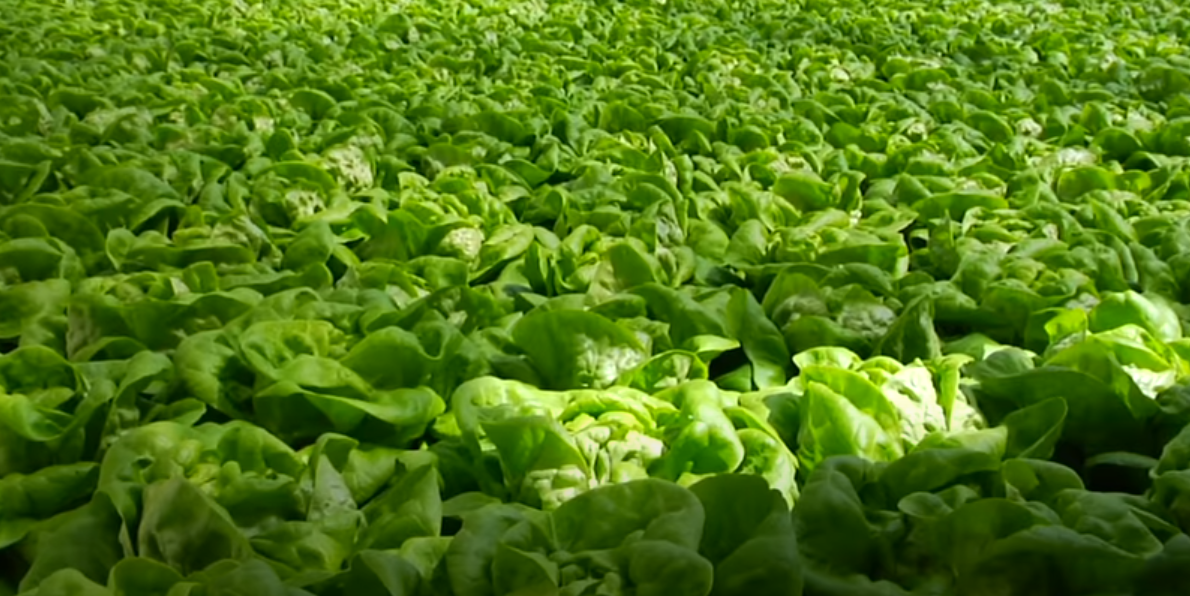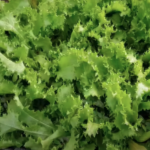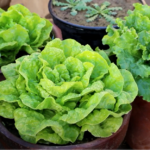Boston lettuce is a loose head lettuce under the butterhead lettuce category. Boston lettuce is also often referred to as butter lettuce or Bibb lettuce which is an ongoing misnomer because Bibb lettuce is a distinct butterhead lettuce cultivar. Boston lettuce has tender, succulent and very delicate leaves. For this reason, it is usually kept or sold with its root intact and immersed in water to keep the leaves alive and fresh. The lettuce is very attractive and used in a wide variety of recipe preparations such as salads, sandwiches and juices.
Table of Contents
What is Boston Lettuce?
Boston lettuce is a bonafide lettuce cultivar belonging to the Lactuca sativa species and Daisy or Asteraceae (aster) family. Boston lettuce other names are Tom Thumb (which is good for containers) and Butter (see Boston vs Bibb lettuce section). This lettuce has large, soft, tender and gently cupped leaves. Boston lettuce, as earlier mentioned, is categorized under butterhead lettuces.
Butterhead or butter lettuce itself is one of a number of broad lettuce types. The name butter emanates from the creamy texture of the lettuce. Furthermore, butterheads also develop a light yellow buttery appearance. Today, there are many butterhead lettuce varieties, some of which are purple or red and some have speckles or red pigment on green leaves such as the Speckled Butterhead Organic.
The University of Illinois Extension identifies 5 distinct over-arching lettuce groups which are loose-leaf lettuce, Cos also called Romaine, Crisphead, Butterhead and Stem which is also called Asparagus lettuce. Each of these main lettuce groups have varieties within them. Boston lettuce is a cultivar within the Butterhead lettuce category.
Although referred to as lettuces, types such as lamb’s lettuce and frisée are look-alike lettuces which are not of Lactuca sativa species. However, some Lactuca sativa kinds especially of the loose-leaf variety, are not only green but also purple or red in leaf color.
Is Boston lettuce same as Iceberg lettuce?
Boston lettuce is not the same as iceberg lettuce. Boston lettuce is an easy to grow butterhead lettuce which has a loose head and loose cup-like looking leaves which can be used for stuffing. On the other hand, Iceberg which is also known as Crisphead lettuce is a fresh market type lettuce often grown commercially and generally difficult to grow for home gardeners due to its long season and easy bolting in high temperatures. Furthermore, unlike Boston lettuce, Iceberg lettuce head is tightly compact and its leaves are crisp and light-green.
Boston Lettuce vs Bibb Lettuce
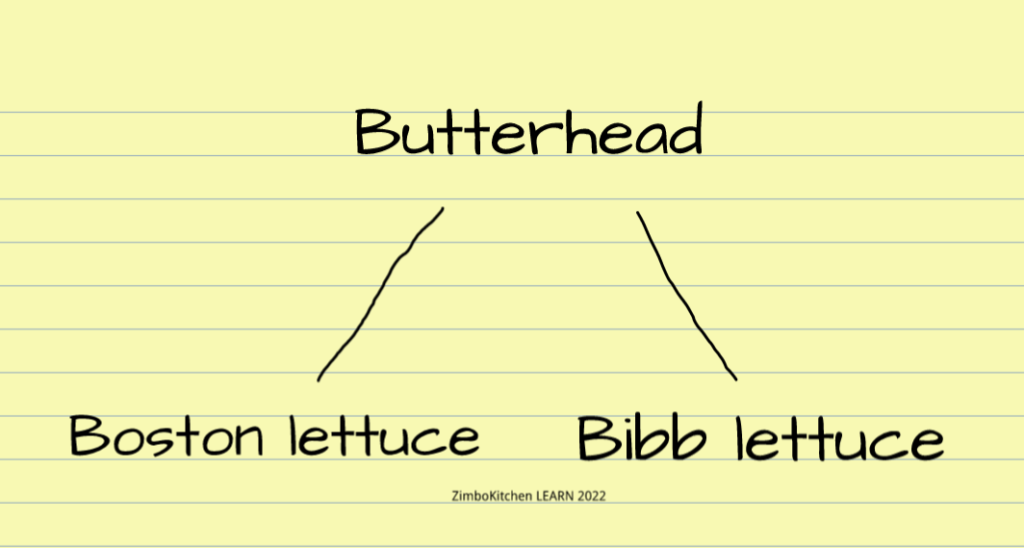
There has been some apparent confusion between Boston and Bibb lettuce. The two names have been used interchangeably between themselves and also with the butterhead. This interchangeability is common in gardening and recipe videos and other information sources.
However, Louisiana State University clarifies the position, stating that Boston and Bibb lettuce are two subgroups or cultivars of the butterhead lettuce. They are not strictly one and the same. Although very close in resemblance, Bibb lettuce is smaller in size and has a darker green color compared to Boston lettuce. Exposed to high temperatures, Bibb lettuce develops bitterness.
Origins of Bibb lettuce
Bibb lettuce is said to have been developed from Boston lettuce by an American, John M. Bibb, a former war officer, in 1865. The lettuce was first called limestone lettuce before it was eventually changed to Bibb lettuce in his honor. John Bibb’s lettuce was of a sweeter flavor. It was only commercially available in the late 19th century.
In the decades that followed, George J. Raleigh developed his equally popular Summer Bibb and Buttercrunch lettuce varieties from the Bibb lettuce.
Overall, Boston lettuce and Bibb lettuce are closely related butterhead lettuces that when used in recipe preparations may be difficult to pick apart for the untrained. This, in part, explains the continued interchangeable use of their names.
Boston Lettuce Nutrition and Benefits
Boston lettuce, like all leafy lettuce, is a nutritious vegetable predominantly rich in Vitamin K. Vitamin K plays a role in blood clotting, bone metabolism, and regulating blood calcium levels according to Medical News Today.
Furthermore, a scientific study published in 2020 by the journal Antioxidants, demonstrated that regardless of cultivar, red butterhead lettuce mature leaves had concentrated Phosphorus and Potassium. Phosphorus plays a role in bone and teeth formation as well as how the human body utilizes carbohydrates and fats.
Purple or red Boston lettuce has enhanced health benefits owing to the presence of anthocyanins. Anthocyanins are water-soluble bio-compounds which are responsible for the red, purple or blue color pigmentation in some fruits and vegetables. Other common foods which contain these compounds are purple lettuce, purple broccoli, some basil flowers, purple eggplant, berries, grapes and beets.
In 2017, the journal Food and Nutrition Research published a research article which showed that pigmented fruits and vegetables such as red Boston lettuce provide important health benefits related to protection against cardiovascular disease, antidiabetic, anticancer, anti-inflammatory, antimicrobial, and anti-obesity effects. In fact, foods that provide these types of human health benefits which go beyond basic nutrition have been referred to as functional foods.
While some varieties of Boston lettuce may be functional foods associated with the said super health benefits, it can be stated that other important factors such as intensity of the pigmentation, quantities consumed, frequency and human body metabolism, finally determine the extent to which the benefits are actually realized.
Boston Lettuce Recipes
Boston lettuce is primarily cultivated for food. Once harvested, it is applicable mostly raw in wide ranging culinary recipes. Its nutritious value makes it a healthy addition to any type of diet be it regular meat and carbs diet, vegan, vegetarian or plant based diet. The lettuce has a sweet, nutty and mild flavor. In addition, the texture of the leaves makes Boston lettuce easy to pair with a wide variety of ingredients.
Whenever a recipe calls for lettuce or leafy greens that are used raw, it is possible in many cases to use Boston lettuce as an alternative. The following are some delicious recipes to try out that utilize Boston lettuce and butterhead lettuce in general.
Easy Butter Lettuce Salad Recipe
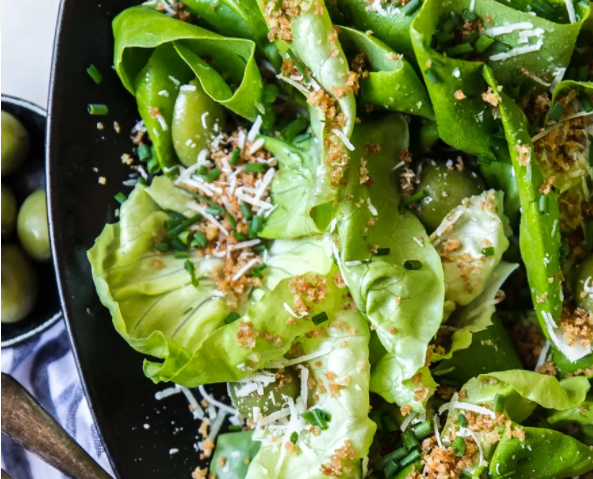
This recipe takes a total 15 minutes and is simple to make. The salad yield will serve 6 and is ideal to serve with a big meal. However, there is nothing to stop you enjoying the salad on its own too. This is a butterhead salad which means it is open to using Boston lettuce or Bibb lettuce.
As mentioned earlier in the context of Boston vs Bibb lettuce, very few people would notice the difference. If you wanted a tad bit bitter but flavorful touch to the salad, you could also sprinkle a few frisée lettuce leaves in there. The lettuce used in this recipe is first washed and spun dry before use (see below about lettuce spinning). Other ingredients that will go into this recipe are olives, breadcrumbs, sheep’s milk cheese and chives. The dressing for the salad will be a scrumptious apple cider vinegar-honey vinaigrette. View Recipe.
Classic TLC Salad Recipe
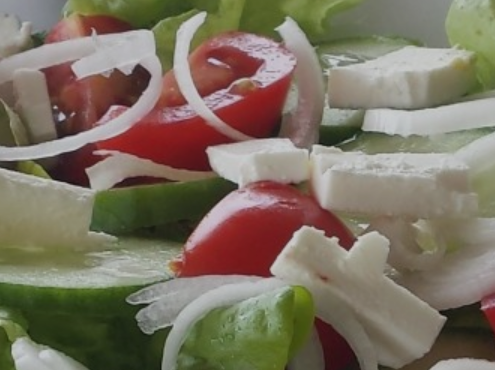
This recipe is in two parts – the salad and the dressing. It produces the Mediterranean type classic tomato, lettuce and cucumber salad (TLC). To avoid having to peel any skin off, use any of the burpless cucumbers such as Armenian, English, Persian or Lemon cucumbers.
These have a nice bitterless flavor and would go well with the Boston lettuce or Bibb lettuce as well as the cocktail tomatoes in this recipe. Spring onion and feta cheese will also be part of the ingredients although the cheese is optional. The salad dressing will be made of white balsamic vinegar, brown sugar and olive oil. This recipe feeds 4 and takes 5 minutes to make. View Recipe.
Stuffed Boston Lettuce with Basil Recipe
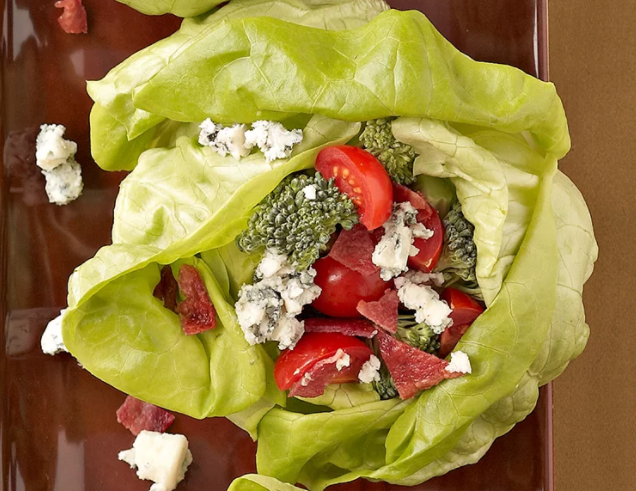
Of all loose leaf lettuces, Boston and Bibb lettuces have unique cup-like shaped leaves which can be used for stuffing. This recipe does exactly that by stuffing the leaves with broccoli florets and tomatoes. In as much as the recipe calls for Bibb lettuce for reasons explained in the recipe, you may also use Boston lettuce if that is what is accessible.
Other ingredients to go into this recipe are small broccoli florets, fresh basil, cheese, turkey bacon, buttermilk and mayonnaise among others. If you wanted color, you could use purple broccoli florets or a mix of both green and purple. This recipe serves 8 and takes 20 minutes to make. View Recipe.
Chicken Boston Lettuce Wraps Recipe
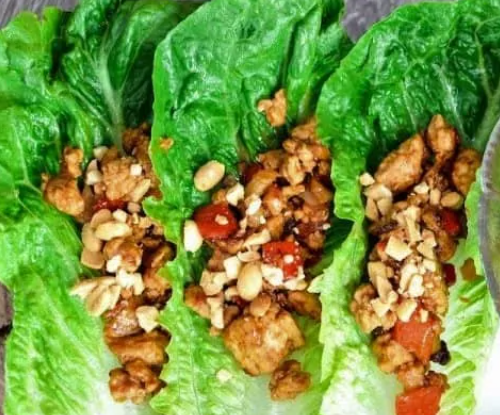
Apart from stuffing, butterhead lettuce leaves can be used as wraps. Of the two, Boston lettuce has an advantage over Bibb lettuce in this recipe due to its broader leaves. For this reason we recommend using Boston variety in this recipe. This recipe is in two parts, the chicken and the sauce.
For the chicken, the ingredients will be some ground chicken, peanut oil, minced onion and diced red or green pepper. If you wanted something sweeter, you could replace the red pepper with pimento peppers. Some of the ingredients to go into the sauce will be soy sauce, sesame oil, rice vinegar, peanut butter and honey among others. As might have been noticed already, this is indeed an Asian recipe. It takes 30 minutes to make and serves 6. View Recipe.
Boston Lettuce Seeds
The Boston variety of butterhead lettuce is easy to grow just as its Bibb lettuce counterpart. Seeds for Boston butterhead lettuce are easily accessible. Planting your own butterhead lettuce is a sure way of guaranteeing regular fresh supply of the leafy green (see growing section). The bonus to it all is that butterhead lettuce can also be raised in containers which is ideal for small spaces.
The following is a list of Boston lettuce seed suppliers in North America.
- Heirloom Buttercrunch Lettuce Seeds vis Amazon
- Butterhead Lettuce Variety Seeds by West Coast Seeds
- Johnny’s Seeds Butterhead Lettuce
- Urban Farmer Boston Lettuce Seeds
- OSC Seeds Boston Butterhead Lettuce Seeds
- SeedsNow Butterhead Lettuce
- Boston Butterhead Lettuce Seeds by NE Seed
- Heirloom Butterhead Lettuce Seeds by Seed Savers
How to Grow Boston Lettuce
Lettuce Growing Season
Growing Boston lettuce is fundamentally similar to growing other Lactuca sativa lettuces on the basis that they are the same species. Butterhead lettuce does well in nutritious loose, cool soil with good drainage. Although some lettuce varieties may withstand, to an extent, higher temperatures, lettuce is a cool-season crop.
Optimal temperatures for growing Boston lettuce and butterhead lettuce, in general, are 45°F to 80°F or 7°C to 27°C. Higher temperatures cause bitterness in some varieties and will also induce bolting. Furthermore, seeds planted in high temperatures tend to take longer to germinate or may remain dormant altogether.
Lettuce will need 6 to 8 hours of sunlight. According to a 2020 report published in the journal Scientific Reports, light and nutrients are important factors in determining the quality of lettuce. Although this study was directed at greenhouse or plant factory settings, its findings are useful in general terms in appreciating influences of quality lettuce production.
Butthead lettuce soils must be kept moist with frequent but light irrigation or watering which also encourages fast growth. Use of mulch will prevent moisture loss and also suppress weeds. When Boston lettuce is mature, its broad leaves start to cup inward forming a non-compact loose head that will never become tight.
Baby Boston Lettuce
Baby Boston lettuce is lettuce of Boston variety that is harvested prematurely. It is a miniature version of the regular mature butterhead lettuce. Some butterhead lettuces take between 50 to 70 days to be ready for harvest. Baby lettuces can be harvested at about half this time or earlier depending on what the grower is interested in. Above all, lettuce can even be harvested within days of germination as microgreens. It is a flexible crop.
When to harvest baby lettuce is thus usually the growers call or market preference in cases where the lettuce is for commercial purposes. Different kinds and varieties of lettuce can be turned into baby lettuces depending on when they are harvested. Nonetheless, apart from the crop being small in size, baby lettuce leaves may also look lighter in color than mature ones because they are harvested earlier than normal.
Finally, growing butterhead lettuce, like all leaf lettuce, is fairly easy and can be done by most home gardeners. However, to appreciate more about growing lettuce we recommend this guide, Lettuce in the Garden, by Utah State University Extension.
How to Store Boston Lettuce
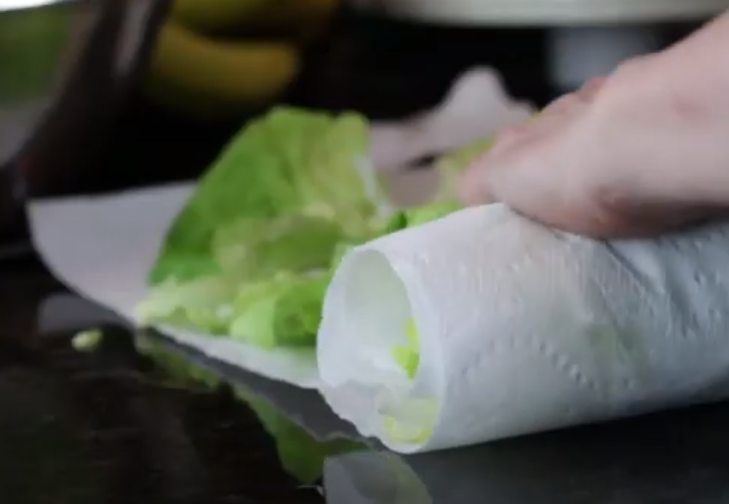
Boston lettuce is highly perishable. How it is stored after harvest is therefore very important. Grocery store butterhead lettuce should typically be purchased the day before or on the day of using it, for best results. When stored in the fridge, most lettuce will remain in good standing for about a week.
An effective way of storing Boston lettuce involves using a paper towel. The following are some simple steps to this method.
- Remove the root and the core from the lettuce head. This will loosen the leaves so they are easy to pick off the head.
- Put the leaves in a bowl with clean water ensuring they are fully covered.
- Remove the leaves from the bowl with water and put them in a salad spinner.
- Spin the leaves dry.
- Remove leaves from the spinner and spread them evenly on a rolled out paper towel. The paper towel will absorb remaining water after spinning.
- Roll the paper towel gently over the leaves wrapping them in the paper towel (as shown in image above).
- Place the wrapped leaves in a zip lock bag and put in the fridge for storage.
Recommended Lettuce Spinner
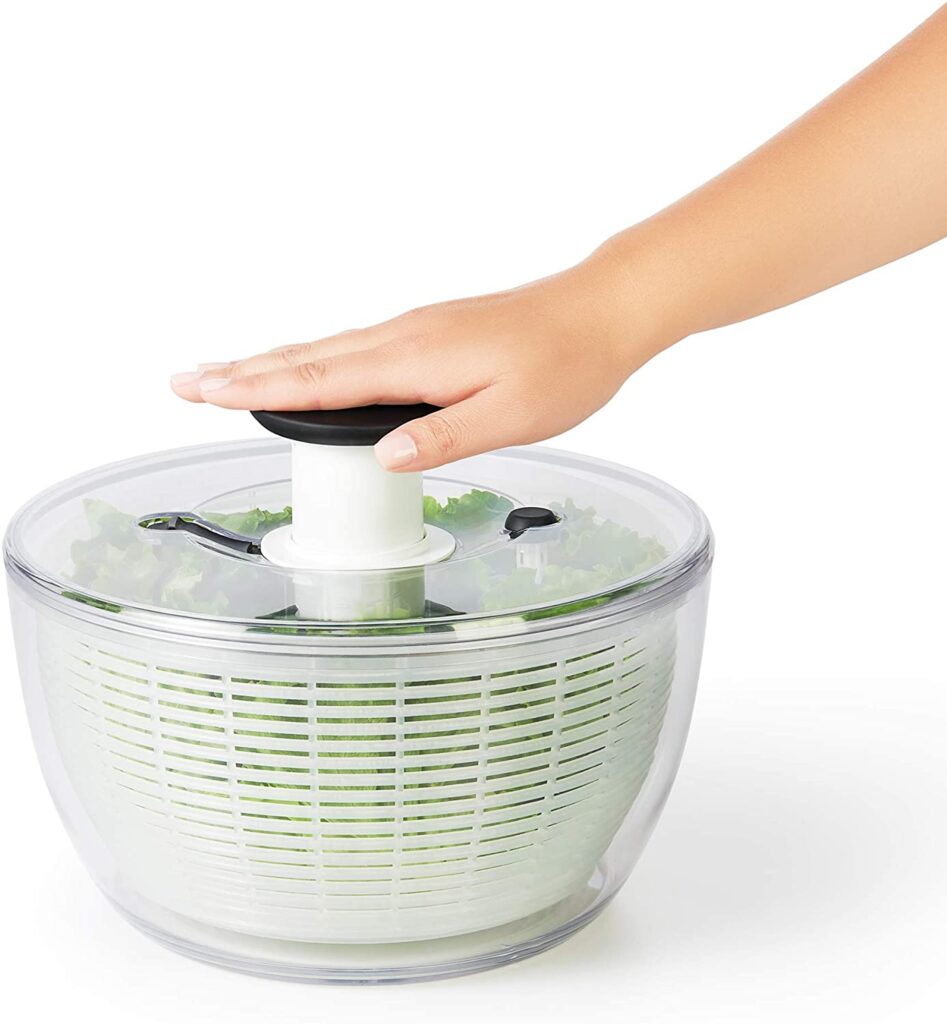
Lettuce spinners, also known as salad spinners, are used for washing and drying lettuce leaves and leafy greens in general. We have already mentioned the convenience of using a salad spinner when preparing lettuce leaves for recipes or for storage.
The alternative to using a spinner to dry your lettuce is using a paper towel each time you work with leafy greens. Salad spinners are designed to shake the leafy greens of any excess water after washing. This ensures that any salad dressing used in the recipe adheres to the vegetable leaves without running off due to residual water remaining on the leaves. Ultimately, what you get is a better looking and better tasting salad. View our recommended Salad Spinner.
Conclusion
Boston lettuce is a butterhead lettuce which shares in this category with Bibb lettuce. Although frequently referred to as Bibb or butter lettuce, Boston lettuce is a distinct butterhead cultivar which carries some slight differences from Bibb lettuce. Boston butterhead lettuce is used in a variety of culinary recipes which include salads, sandwiches, and even juices. It has nutritional value similar to most green lettuces. However, red or purple varieties of this cultivar carry a scientifically proven promise of functional health benefits in humans which go beyond just nutrition. Boston butterhead lettuce is easy to grow in the ground and in containers. It is one of the most grown lettuce varieties by home gardeners.
Recommended Good Reads:
